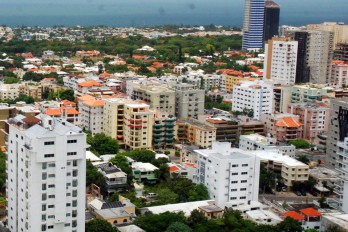
A recent study by the Inter-American Development Bank (IDB) reveals that Latin America and the Caribbean is the most urbanized developing region on the planet. More than 80% of its population lives in cities, which register half a million new residents each month. The IDB warns that if this exponential growth trend continues, 100 million people will reside in only six megacities alone by 2025.
That is, eight out of ten persons in Latin American and the Caribbean live in a city. Research from the Emerging and Sustainable Cities Program (ESC) of the Housing and Urban Development Division of the IDB shows that the urban population increased from 50% in 1950 to 80% in 2014 in the region. Migration to cities is expected to continue and city populations should be 86% by 2050.
The study shows that 36% of the population of the Dominican Republic already lives in large metropolitan areas, i.e., those with populations of 100,000 or more. The report calls for facing the challenges this poses in social, economic and environmental matters. The increase in population in cities is leading to a housing deficit.
Looking at the region as a whole, the countries in descending order with populations concentrated in large metropolitan areas are Trinidad & Tobago 59%, Mexico 54%, Costa Rica 53%, Colombia and Uruguay 52%, Panama 49%, Paraguay and Bolivia 48%, Brazil 47%, Chile, 46%, Peru 45%, the Dominican Republic, Nicaragua and Venezuela with 36%, Ecuador 34%, El Salvador 33%, Guatemala 26%, and Honduras and Haiti 25%.
The IDB says that while the pace of urbanization presents daunting challenges for cities in the region (for instance, deficient housing), it also creates great opportunities for collaboration for those organizations that position themselves strategically to help solve these issues.
Read more:
Listin Diario
IADB
13 November 2019

